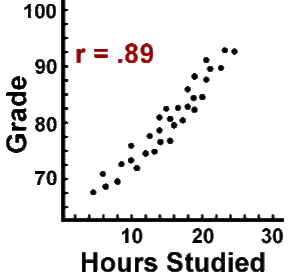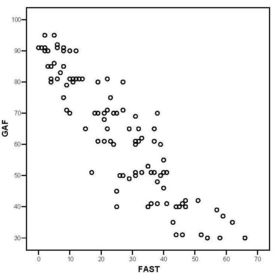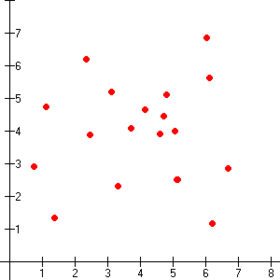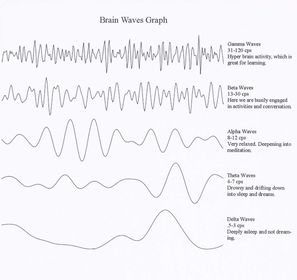N/A Psychology FlashCards sobre Psychology Exam, criado por mdbrown em 07-01-2015.
Pin adicionado em
2
1
0
Sem etiquetas

|
Criado por mdbrown
quase 10 anos atrás
|
|
Fechar

|
Criado por mdbrown
quase 10 anos atrás
|
|

"tabula rasa" At birth we are a blank slate; "a white sheet of paper on which experience writes"
View that knowledge originates in experience and that science should rely on observation and experimentation
Edward Bradford Titchener; used introspection to explore the mind
"looking inward"; self-reflective
William James; focuses on how mental and behavioral processes function- how they enable the organism to adapt and survive
Wrote the first psychology textbook; gave first psychology lecture at Harvard
psychoanalysis; psycho-sexual theory; dream interpretation
Stressed studying observable behavior ONLY
More optimistic approach; emphasizes growth potential; self-actualization; stressed individual choice and free will
study of interaction of thought processes and brain functions
Longstanding controversy over contributions of genes (genetics) and experience
Charles Darwin's theory
perspective on psychology that emphasizes the study of the brain and its effect on behavior
emphasizes how the natural selection of traits promotes the perpetuation of one's genes
emphasizes how we are affected by unconscious drives and conflicts
a psychological approach that emphasizes mental processes in perception, memory, language, problem solving, and other areas of behaviour
a psychological approach that emphasizes social and cultural influences on behaviour
assists people with problems in living often related to work or school
assess and treat mental, emotional, and behavioral disorders
medical doctors licensed to prescribe drugs and treat causes of mental disorders; provide psychotherapy
psychologists who apply their knowledge in the workplace and are especially interested in work motivation and job performance
pure science that aims to increase the scientific knowledge base
scientific study that aims to solve practical problems
the tendency to believe, after learning an outcome, that one would have foreseen it. (Also known as the I-knew-it-all-along phenomenon)
thinking that does not blindly accept arguments and conclusions
testable prediction
a statement of the procedures (operations) used to define research variables. Allows anyone to replicate (repeat) their experiment.
observe, study one person in depth
research method in which information is obtained by asking many individuals a fixed set of questions
involves observing and recording behaviour in naturally occurring situations without trying to manipulate or control the situation
the measure of a relationship between two variables or sets of data; it can vary from -1 (perfect negative correlation) through 0 (no correlation) to +1 (perfect positive correlation)
a graphed cluster of dots that show the correlation between two variables



the perception of a relationship when none exists
the tendency to overestimate the extent to which others share our beliefs
a sample in which every element in the population has an equal chance
a research method in which an investigator manipulates one or more factors (independent variable) to observe the effect on some behaviour or mental process (dependent variable). By random assignment of participants, the experimenter aims to control other relevant factors
neither the experimenter or the participants know who has received the treatment or the placebo
phenomenon that some people get better even tough they receive no medication but instead are administered an inert substance which should have no medical effect
the group that is receiving the independent variable
in an experiement, the group that is NOT exposed to the treatment; contrasts with the experimental group and serves as a comparison for evaluating the effect of the treatment
mean- the average score and the most commonly used measure of central tendency, median- the midpoint, mode- the most frequently occurring score
a computed measure of how much scores vary around the mean score
Animal Studies: 1) must have a clear, scientific purpose; 2) must care for animals in a humane way; 3) acquire animal subjects in a legal way; 4) least amount of suffering possible
Human Research: 1) no coercion; 2) informed consent; 3) anonymity/confidentiality; 4) participants cannot be placed at significant mental or physical risk; 5) debriefing
study of the parts and function of neurons
sensory (afferent) neurons carry info from the sensory organs to the brain (INPUT)
Motor (efferent) neurons that carry outgoing information from the brain and spinal cord to the muscles and glands (OUTPUT)
Neurons that connect sensory and motor neurons, carrying messages between the two
branching extensions of neuron that receives messages from neighboring neurons
contains the nucleus
a long, thin fiber that transmits signals away from the neuron cell body to other neurons, or to muscles and glands
fatty covering around the axon that speeds up neural transmission
branched end of the axon that contains the neurotransmitters
the space between the terminal buttons of one neuron and the dendrites of the next neuron
a neuron that fires completely or it does not fire!
a neural impulse; a brief electrical charge that travels down an axon. The action potential is generated by the movement of positively charged atoms in and out of channels in the axon's membrane
the state of neuron when it is at rest and capable of generating an action potential
after a neuron fires, it can not fire again for a brief period of time
chemical messengers that travel across the synaptic gaps between neurons. When released by the sending neuron, neurotransmitters travel across the synapse and bind to receptor sites on the receiving neuron, thereby influencing whether that neuron will generate a neural impulse
involved in muscle movement, learning, and memory
influences movement, learning
affects mood, sleep, and arousal
"morphine within" natural opiate-like neurotransmitters linked to pain control and pleasure
brain and the spinal cord
Links the CNS with the body's sense receptors, muscles, and glands
the part of the peripheral nervous system that controls voluntary movement of skeletal muscles
control of involuntary body functions of muscles, glands, and internal organs
when sensory information only goes to the spinal cord and not the brain before reacting
the body's "slow" chemical communication system; a set of glands that secrete hormones into the bloodstream
release epinephrine (adrenaline) and nor
"the master gland"; located in the core of the brain where it is controlled by an adjacent area of the brain (the hypothalamus); regulates growth and controls the other endocrine glands
detects brain waves. Researchers can examine types of brain waves produced by the brain to generalize about brain function

Uses x-rays to take pictures of the brain at various angles
uses magnetic fields to measure the density and location of the brain material
Removal or destruction of part of the brain
a visual display of brain activity that detects where radioactive form glucose goes while the brain performs a given task
a technique for revealing blood flow, and therefore, brain activity by comparing successive MRI scans. Show brain function.
our life support system; includes the medulla, pons, and the cerebellum
controls blood pressure, heart rate, and breathing
connects the hindbrain and midbrain; involved in control of facial expressions
coordinates muscle movement; means "little brain"
between the hindbrain and the forebrain; integrates sensory information and muscle movements
a net-like collection of cells throughout the midbrain that controls body arousal
control center; structures- thalamus, hypothalamus, amygdala, and hippocampus

 Ocultar acertos
Ocultar acertos